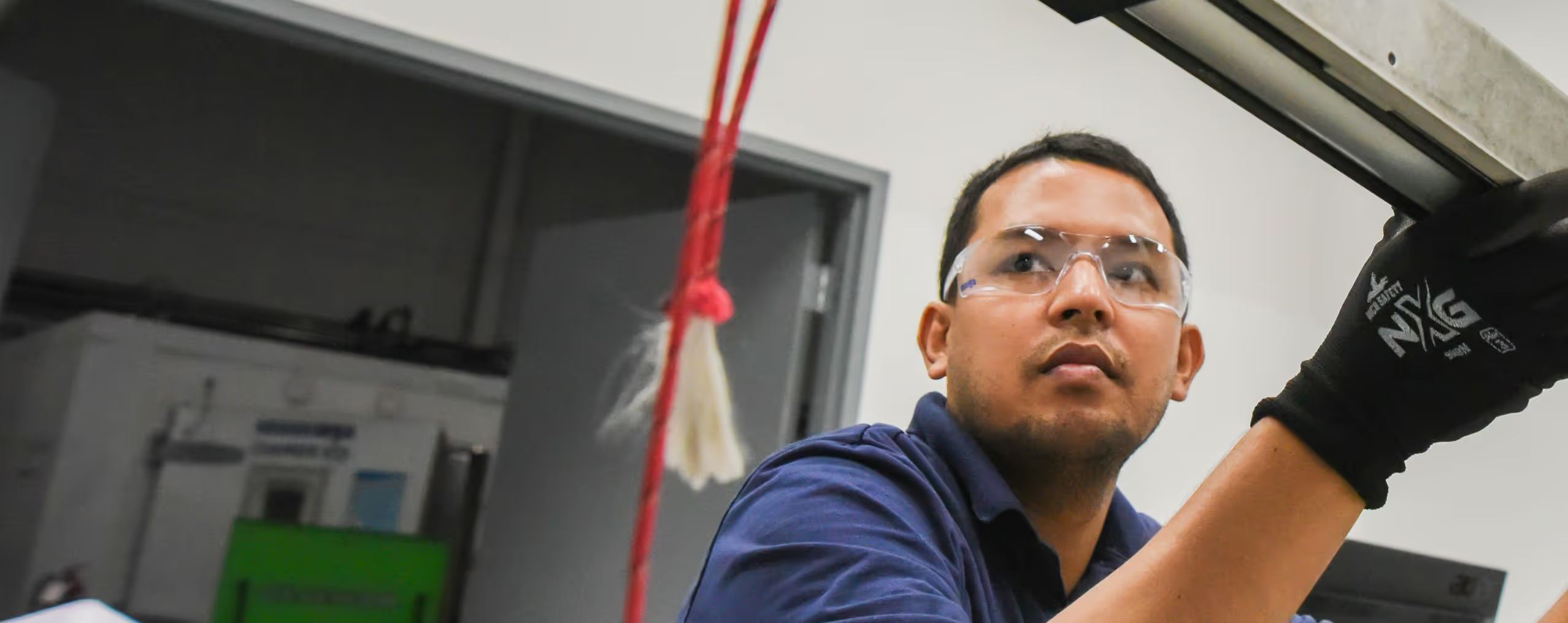
Equipment
MGA designs, manufactures, and supplies cutting-edge testing equipment used by industry leaders and regulatory bodies worldwide, offering solutions for automotive, aerospace, and defense testing needs.
Vehicle Crash

Full Crash Test Facility
High-efficiency operation, comprehensive training, and innovative features enable a wide range of vehicle crash tests meeting global safety standards.

Side & Rear Impact Cart
Versatile impact cart designed for various crash test configurations, featuring adjustable components and compatibility with multiple barrier types and instrumentation systems.

Flying Floor
Precise side impact and pole tests for various vehicle sizes, featuring adjustable configurations and integrated safety measures.

Vehicle Rotisserie
Efficient rotisserie system for post-crash fuel leakage evaluation, accommodating various vehicle sizes with precise rotation control and integrated safety features.
Sled

Accelerator Sled Facility
Industry-leading accelerator sled technology offering precise simulation of crash conditions, featuring modular design, touchscreen controls, and versatile testing capabilities for multiple regulatory standards.
Safety

Seat Anchorage System
State-of-the-art system for evaluating seat and seatbelt anchorage strength, featuring customizable configurations, user-friendly controls, and compliance with global safety standards.

Head Restraint System
Comprehensive head restraint testing system for evaluating seat and head restraint performance, offering multiple test stations and compliance with international safety standards.

Roof & Side Crush Strength System
Dual-purpose system for rigorous roof crush and side intrusion testing, capable of high-load scenarios and compliant with NHTSA and IIHS requirements.

Free Motion Headform System
Advanced system for conducting precise free-motion headform tests, featuring multi-axis adjustability and comprehensive data acquisition for vehicle interior safety evaluations.

Linear Impact System
Highly versatile linear impact system for conducting a wide range of dynamic tests, featuring interchangeable impactors and adjustable parameters to suit various automotive and material testing requirements.

Ejection Mitigation System
Specialized system for evaluating vehicle ejection mitigation countermeasures, featuring precise impactor control and comprehensive data acquisition to meet FMVSS 226 requirements.

Pedestrian Impact System
Innovative system featuring multi-axis test frame and state-of-the-art impactors for comprehensive pedestrian protection testing and evaluation of vehicle front exteriors.
Battery

Hydraulic Static Crush System
Portable hydraulic crush system with 200,000 pound load capacity for conducting industry-standard battery abuse tests in a containment chamber.

Containment Chamber
Reinforced steel and concrete chamber designed for safely conducting potentially flammable battery tests indoors, featuring modular construction and optional T-slot flooring.
Life Cycle Durability
.avif)
Manual Life Cycle Station
Versatile pneumatic life cycle testing system capable of automating complex motion sequences for various components, with customizable cylinder options and easy-to-use programming software.

Power Life Cycle Station
Automated power life cycle testing station for controlling DC motors and devices, featuring adjustable voltage output and programmable sequence execution for various automotive and transportation applications.

Hybrid Life Cycle Station
Versatile hybrid life cycle testing station combining pneumatic and electrical controls for complex, automated sequences of mechanical and powered events in automotive and aerospace applications.
Space & Defense

Pyroshock Testing
Advanced pyroshock testing simulates extreme vibration environments for aerospace and defense components, offering customizable shock profiles with high repeatability across various system sizes.

Ready to Get Started?
Let's discuss your testing needs and how MGA can help. Our team is ready to provide the expertise and solutions you're looking for.
